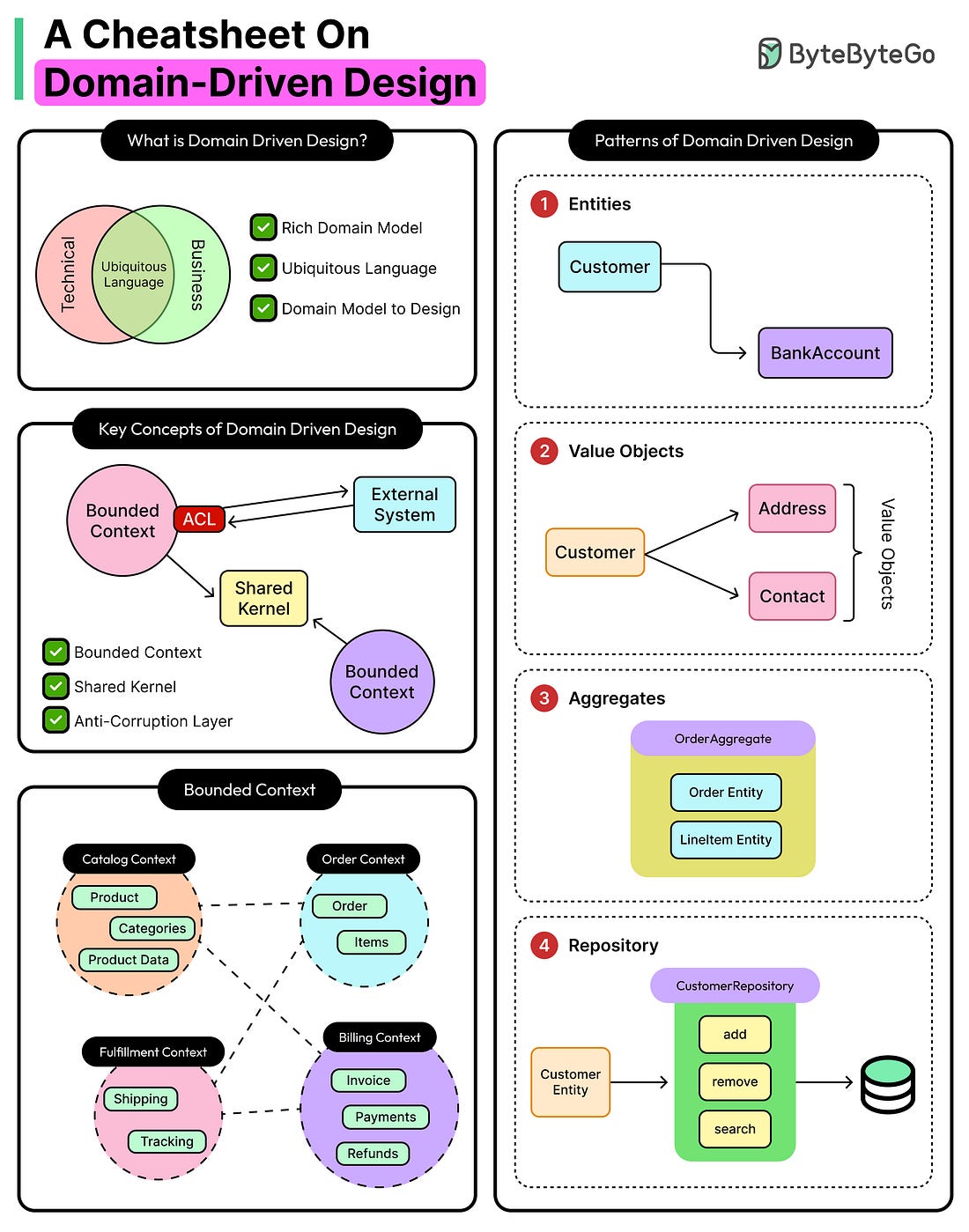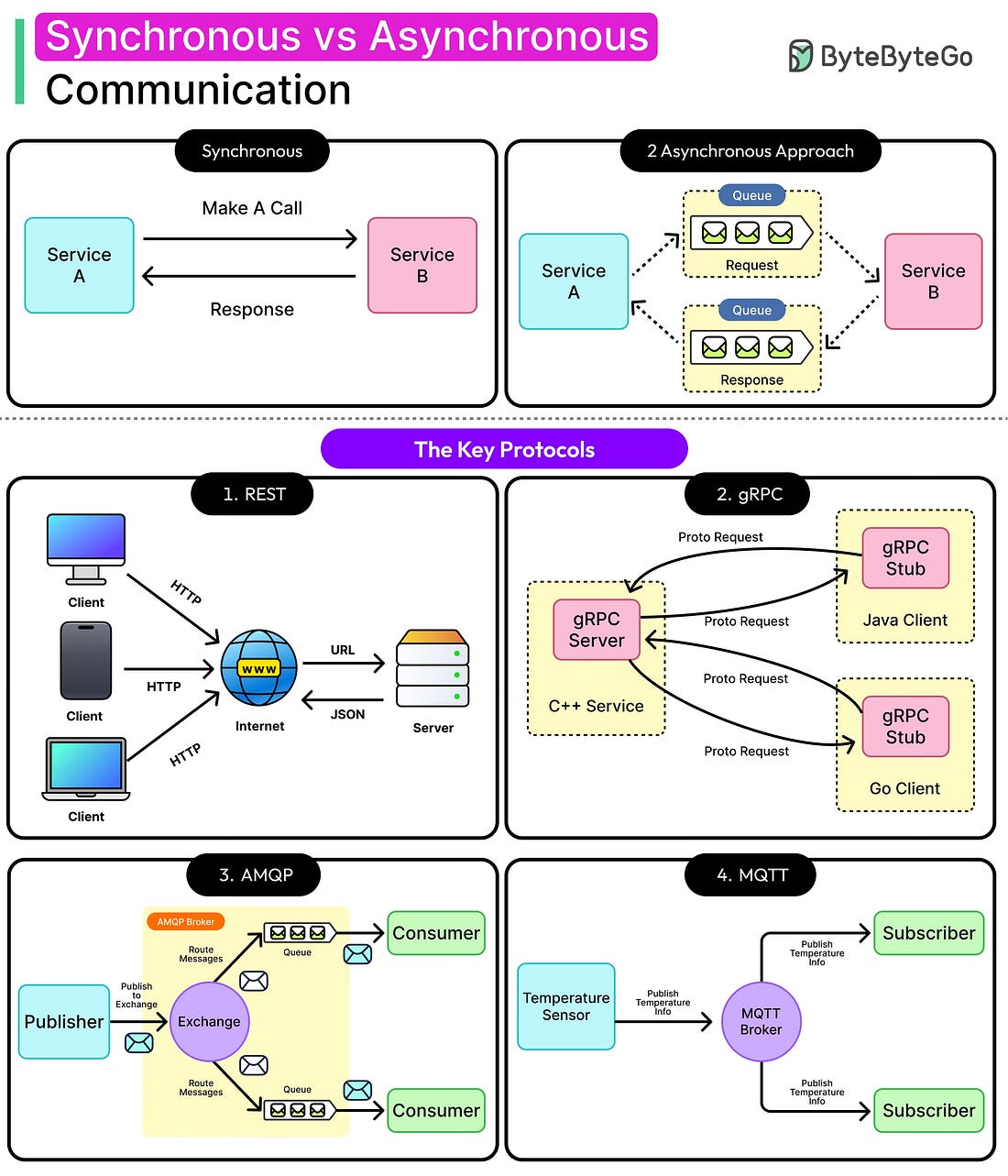|
Latest articles
If you’re not a subscriber, here’s what you missed this month.
Coupling and Cohesion: The Two Principles for Effective Architecture
OOP Design Patterns and Anti-Patterns: What Works and What Fails
The Art of REST API Design: Idempotency, Pagination, and Security
To receive all the full articles and support ByteByteGo, consider subscribing:
A system's usefulness depends heavily on its ability to communicate with other systems.
That’s true whether it’s a pair of microservices exchanging user data, a mobile app fetching catalog details, or a distributed pipeline pushing events through a queue. At some point, every system has to make a call: Should this interaction happen synchronously or asynchronously?
That question surfaces everywhere: sometimes explicitly in design documents, sometimes buried in architectural decisions that later appear as latency issues, cascading failures, or observability blind spots. It affects how APIs are designed, how systems scale, and how gracefully they degrade when things break.
Synchronous communication feels familiar. One service calls another, waits for a response, and moves on. It’s clean, predictable, and easy to trace. However, when the service being called slows down or fails, then everything that depends on it also gets impacted.
Asynchronous communication decouples these dependencies. A message is published, a job is queued, or an event is fired, and the sender moves on. It trades immediacy for flexibility. The system becomes more elastic, but harder to debug, reason about, and control.
Neither approach is objectively better. They serve different needs, and choosing between them (or deciding how to combine them) is a matter of understanding different trade-offs:
Latency versus throughput
Simplicity versus resilience
Real-time response versus eventual progress
In this article, we’ll take a detailed look at synchronous and asynchronous communication, along with their trade-offs. We will also explore some popular communication protocols that make synchronous or asynchronous communication possible.
Understanding the Basics...
Continue reading this post for free in the Substack app
|



